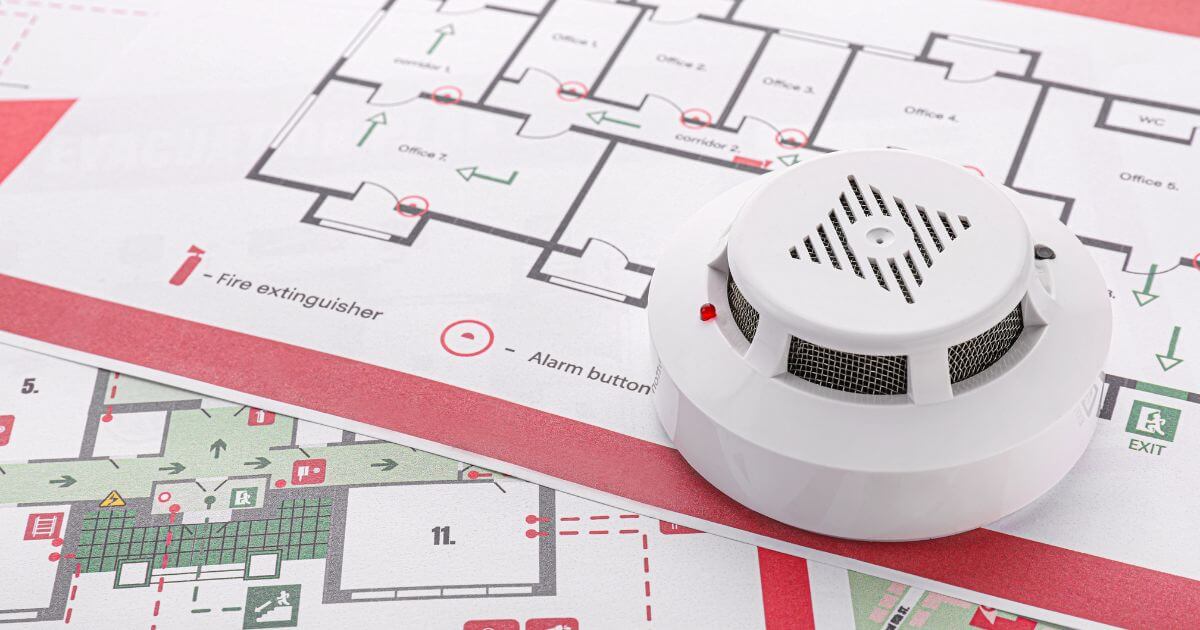Fires can spread rapidly. An early warning system gives building occupants enough time and information to safely evacuate in an orderly fashion.
Monitoring stations use alarms to provide timely assistance when something threatens, sending emergency services directly to its location and helping reduce false alarms that divert resources from real emergencies while potentially creating panic or confusion.
Detectors
Fire alarm systems rely on sensors that detect smoke, heat, or other potentially dangerous conditions to inform fire alarm control panels of potential threats and sound notification devices such as bells or sirens to inform building occupants to evacuate immediately. They also notify remote fire alarm monitoring stations which then contact emergency services to speed response times more effectively. Fire alarm systems help businesses meet Occupational Safety and Health Administration (OSHA) regulations as well as local fire codes while simultaneously safeguarding employee and customer safety.
There are various types of fire alarm detectors, each offering distinct advantages over another. Ionization sensors tend to respond more rapidly than photoelectric detectors to smoldering combustibles while being less susceptible to false alarms from sunlight reflections or reflections from nearby surfaces, while combination multicriteria or intelligent alarms offer increased protection by minimizing unwanted alarms from non-fire sources.
The control panel serves as the brain of any fire alarm system, recording inputs and outputs before managing them accordingly. It displays various conditions including “Alarm,” “Trouble,” or “Supervisory.” In case of fire-related emergencies, commercial fire alarm systems utilize standard telephone lines, cellular transmission or IP networks to notify an outside central station that will then send out signals directly to first responders who will assess and respond quickly as required.
Call Points
As soon as smoke or heat detectors detect early warnings of fire, they notify a fire alarm panel which then triggers other detection appliances – horns, bells or strobe lights – to sound their respective alarms and encourage everyone in the building to evacuate promptly. Voice announcements may also help those who cannot evacuate as quickly.
Manually activated devices, commonly referred to as fire alarm boxes, pull stations or break glass units (in Europe), are placed throughout buildings so individuals can manually activate the system themselves. They’re typically installed near exit doors and escape routes for easy activation by anyone noticing an emergency situation such as fire.
At its core, each manual call point consists of a wall-mounted device containing a breakable glass element and plastic cover that when broken activates an alarm to the fire alarm panel and subsequent notification devices such as horns or bells; depending on your environment and code requirements these may also include strobe lights. When working at facilities with manual call points it’s essential that employees familiarize themselves with how and where these can be found quickly in an emergency situation, practicing using them during fire drills ensures you will have quick and seamless responses when disaster strikes! To do this successfully it’s key that employees familiarize yourself with their locations as quickly and effortlessly as possible when emergencies strike! Fire drills offer great opportunity to practice using these devices so they’ll be ready when an actual emergency situation arises!
Control Panel
A fire alarm control panel (also referred to as a system panel or fire control unit) serves as the central monitoring component of your fire alarm system, receiving inputs from initiating devices, such as detectors and initiators, before activating all output devices that make up your alarm system. It acts as the “brains” of your alarm system by receiving signals from initiating devices as inputs while sending outputs out as outputs from those inputs.
Initiating devices are either manual or automatic devices that are activated by smoke particles, heat or gas like carbon monoxide. Examples include traditional smoke detectors, air aspirating sensors and beam detectors as well as manual devices like manual pull stations that occupants can activate by pulling a lever or pushing a button mounted by stairwell doors.
As soon as an input signal reaches a fire alarm control panel, it can send out output signals to alarm devices like horns, sirens, bells or strobe lights to sound warnings of impending danger and allow time for safe evacuation in an orderly fashion. Furthermore, you may integrate fire alarms with public address (PA) systems in order to broadcast messages over loudspeakers across your facility; such integration can help cut costs and boost efficiency by eliminating separate communications infrastructures altogether and using existing technologies for multiple functions at once.
Monitoring
Fire alarm monitoring services provide around-the-clock surveillance of a property’s fire safety system. When activated, these systems send real-time alerts directly to a central monitoring center that dispatches emergency services immediately – helping ensure that occupants are evacuated quickly and that firefighters arrive as quickly as possible to bring down fires as quickly as possible, thus significantly reducing potential damages caused by them.
Fire Alarm Control Panels (FACPs) are at the core of any fire alarm system, monitoring input from devices like smoke detectors and manual call points to identify potential dangers using various communication methods, such as cell networks, radio frequency or IP addresses.
Once a fire alarm panel detects an issue, it will notify its occupants via various forms of visual notifications such as flashing lights and strobe lights or video displays that can inform people where to exit from a situation.
Supervisory signals may also be employed by some systems to monitor their own condition, including checking for low batteries or power outages. Such monitoring is especially essential considering that between 2018-2022 local fire departments were called out to 19,119 home fires where smoke alarms did not operate, most often as a result of disconnected or non-working power sources – typically batteries – which did not function.

